ROY LICHTENSTEIN (1923-1997)


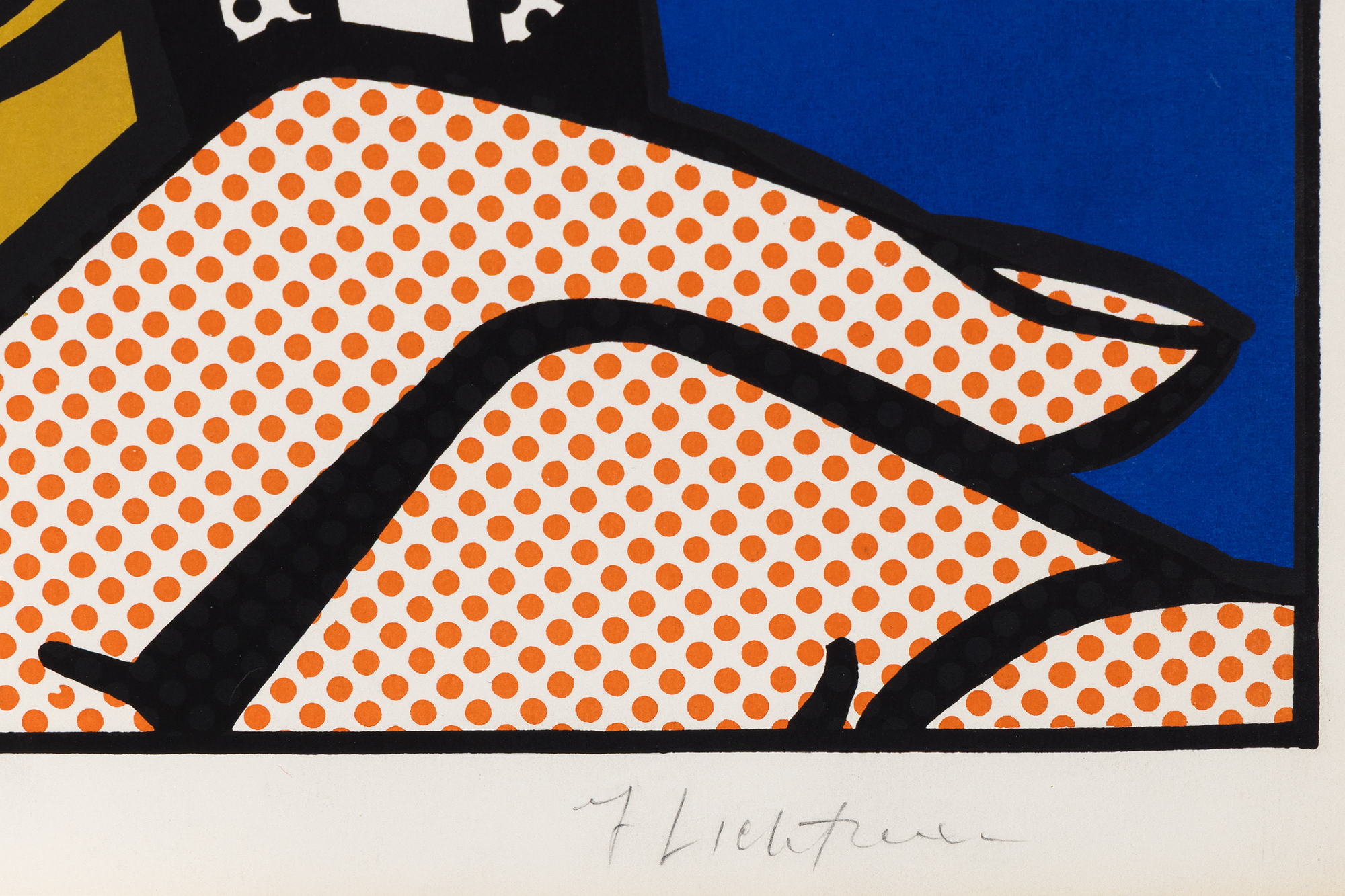

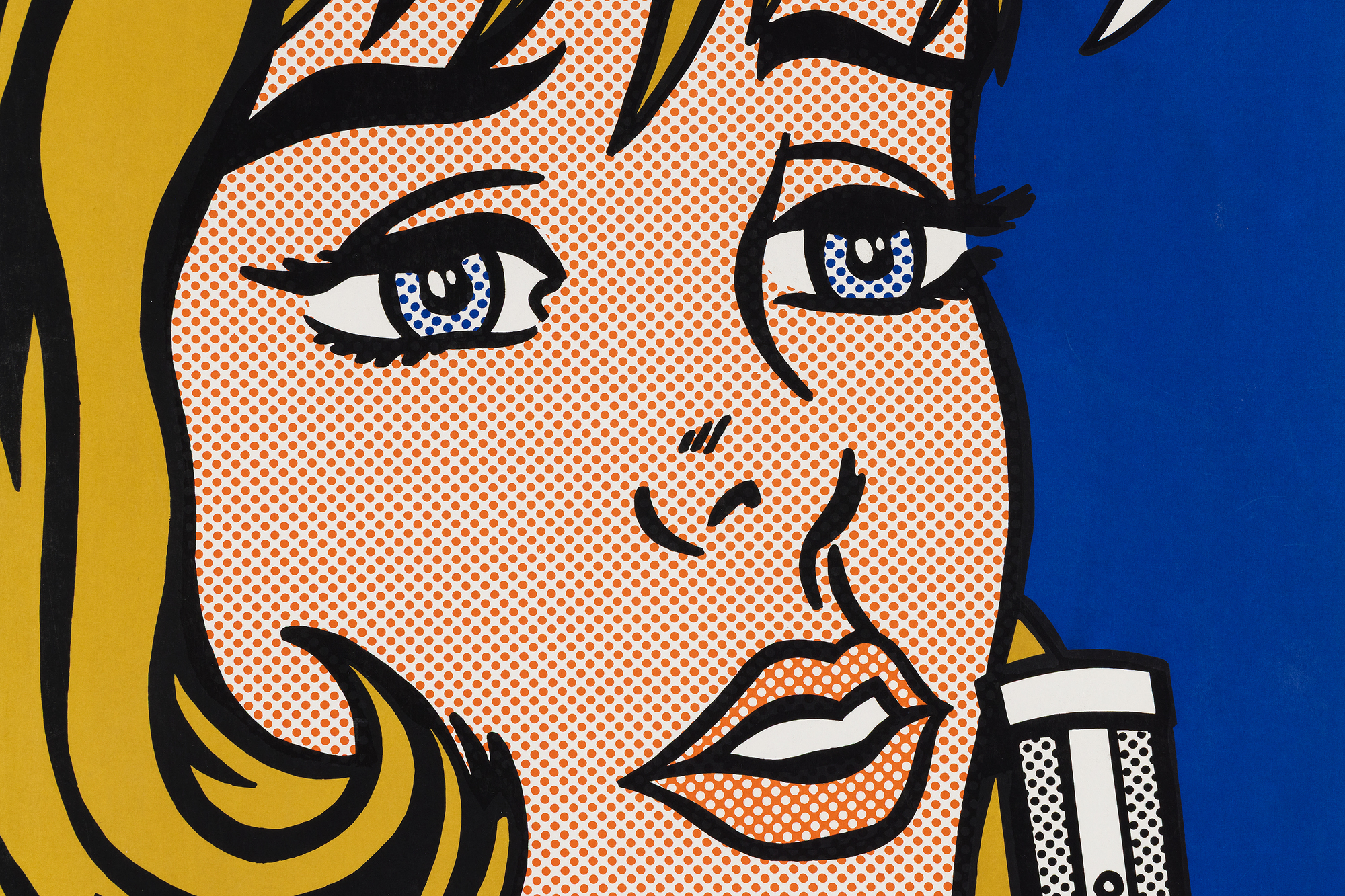
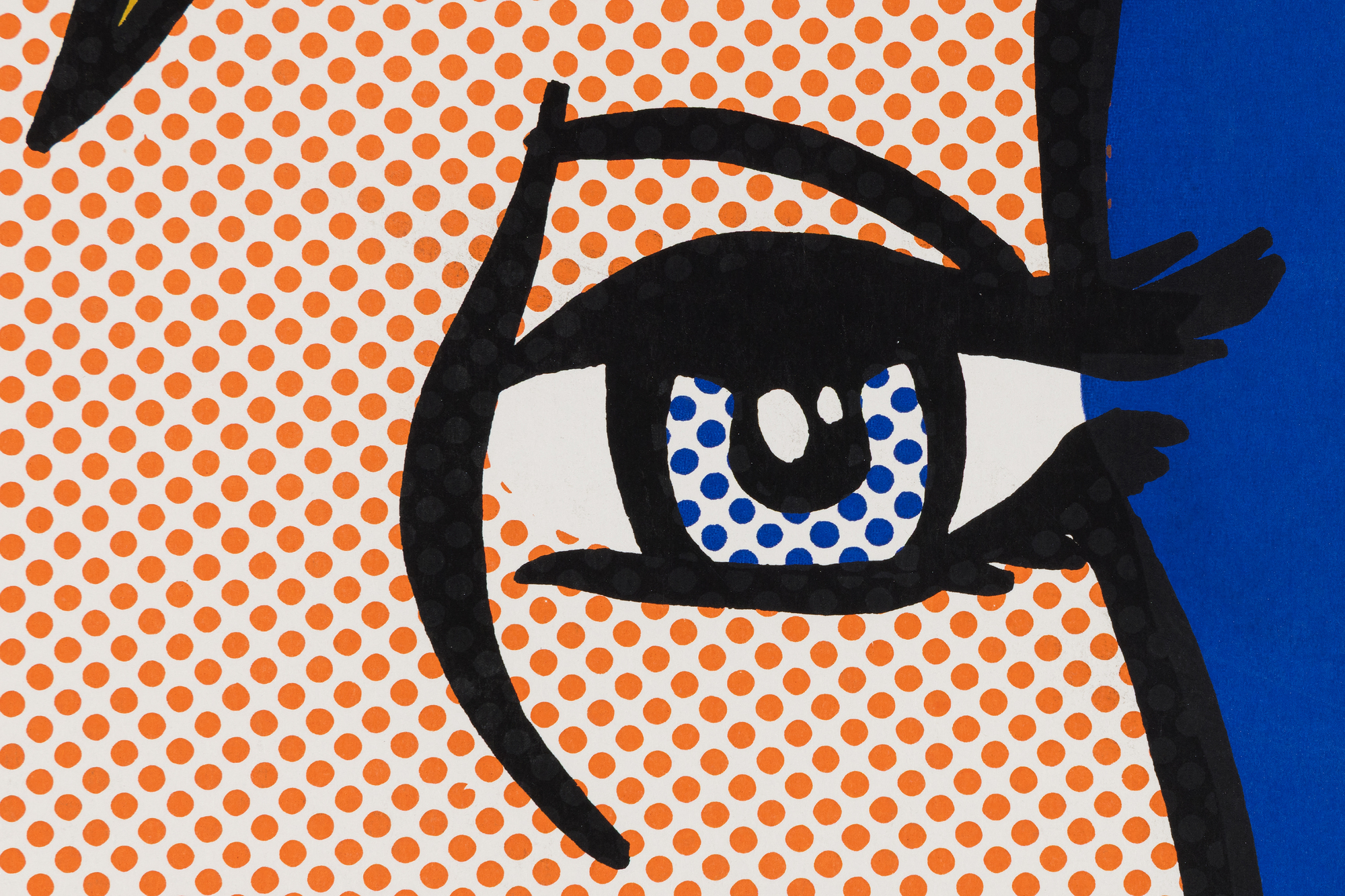
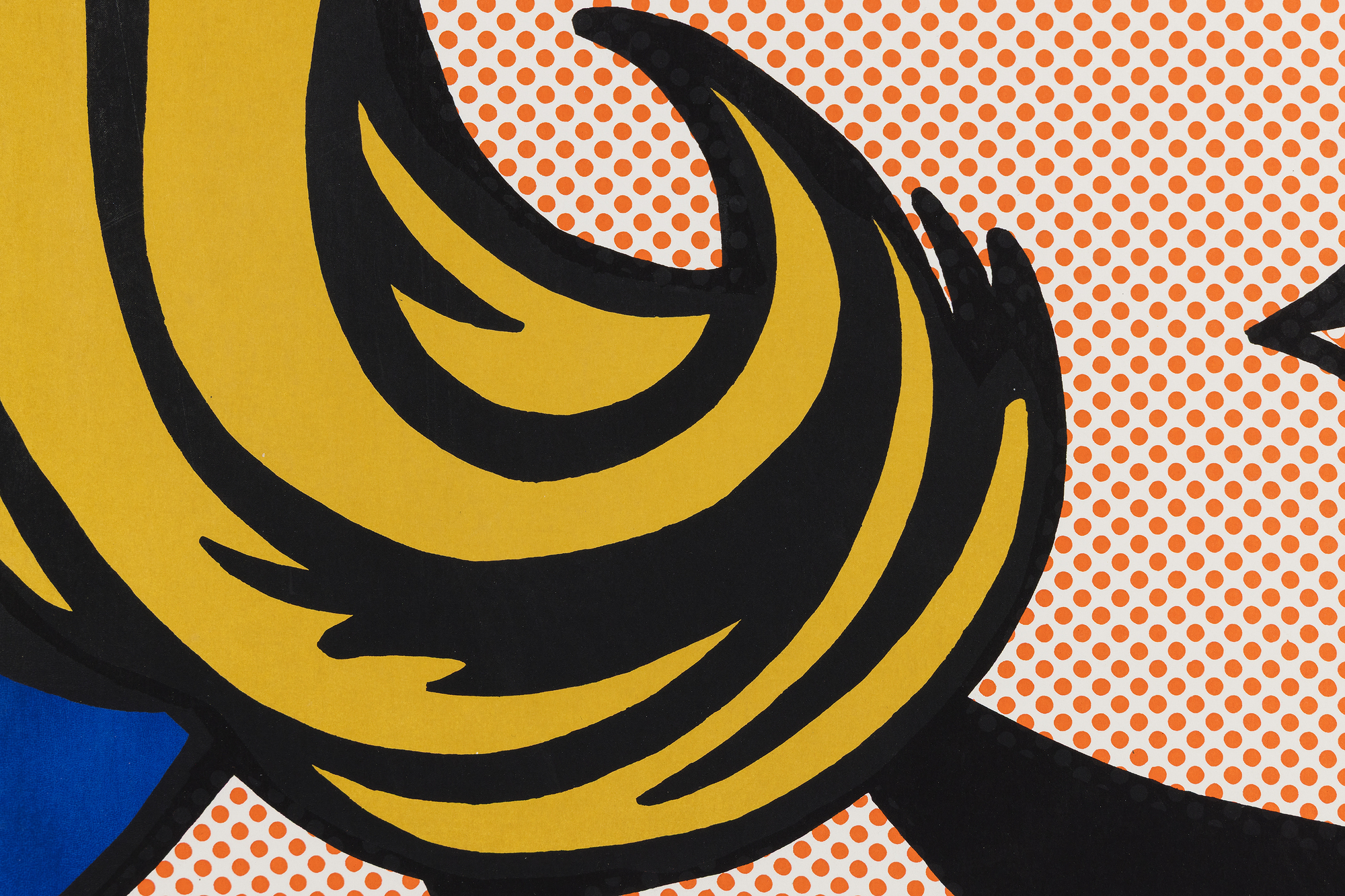

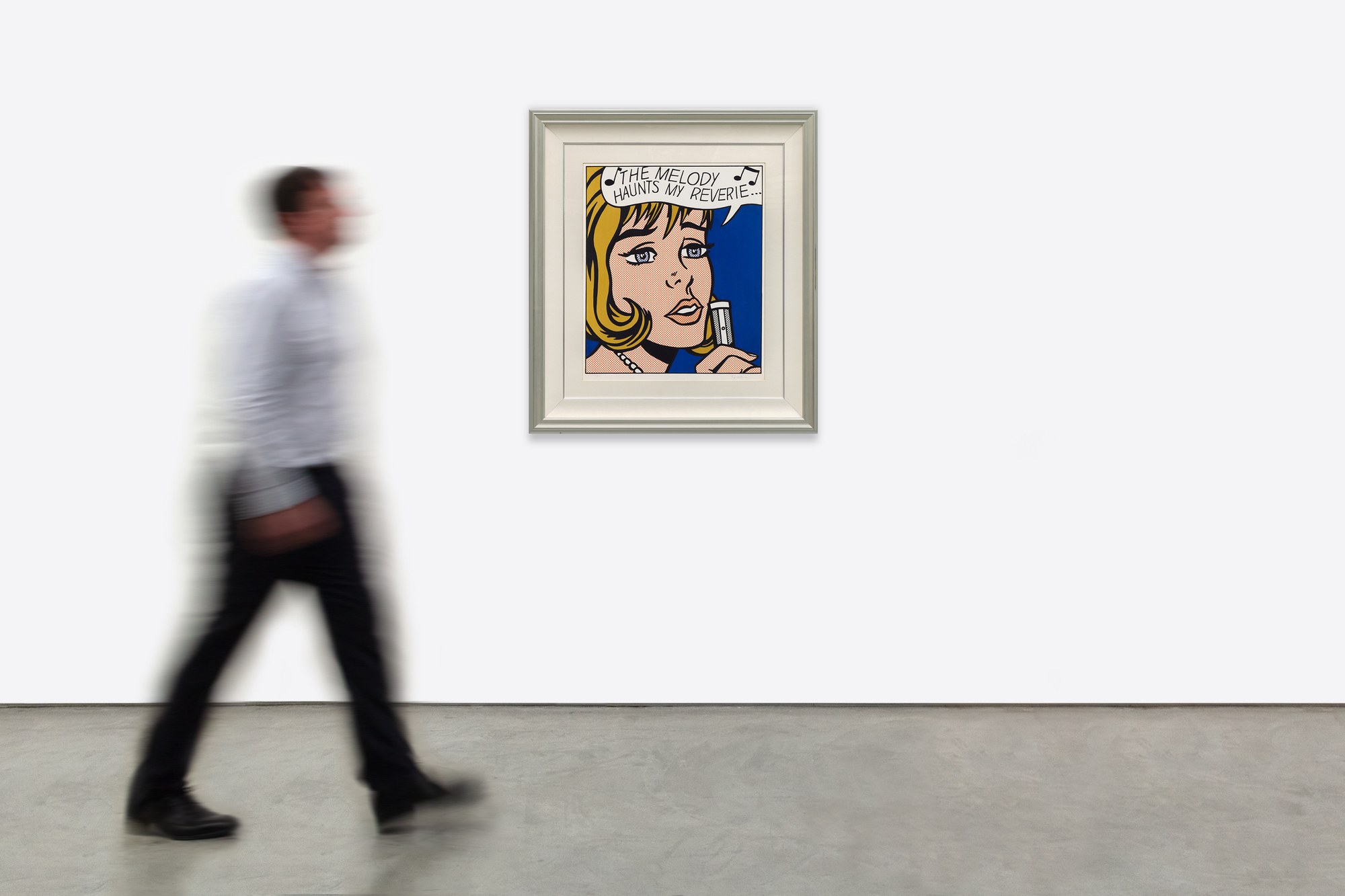
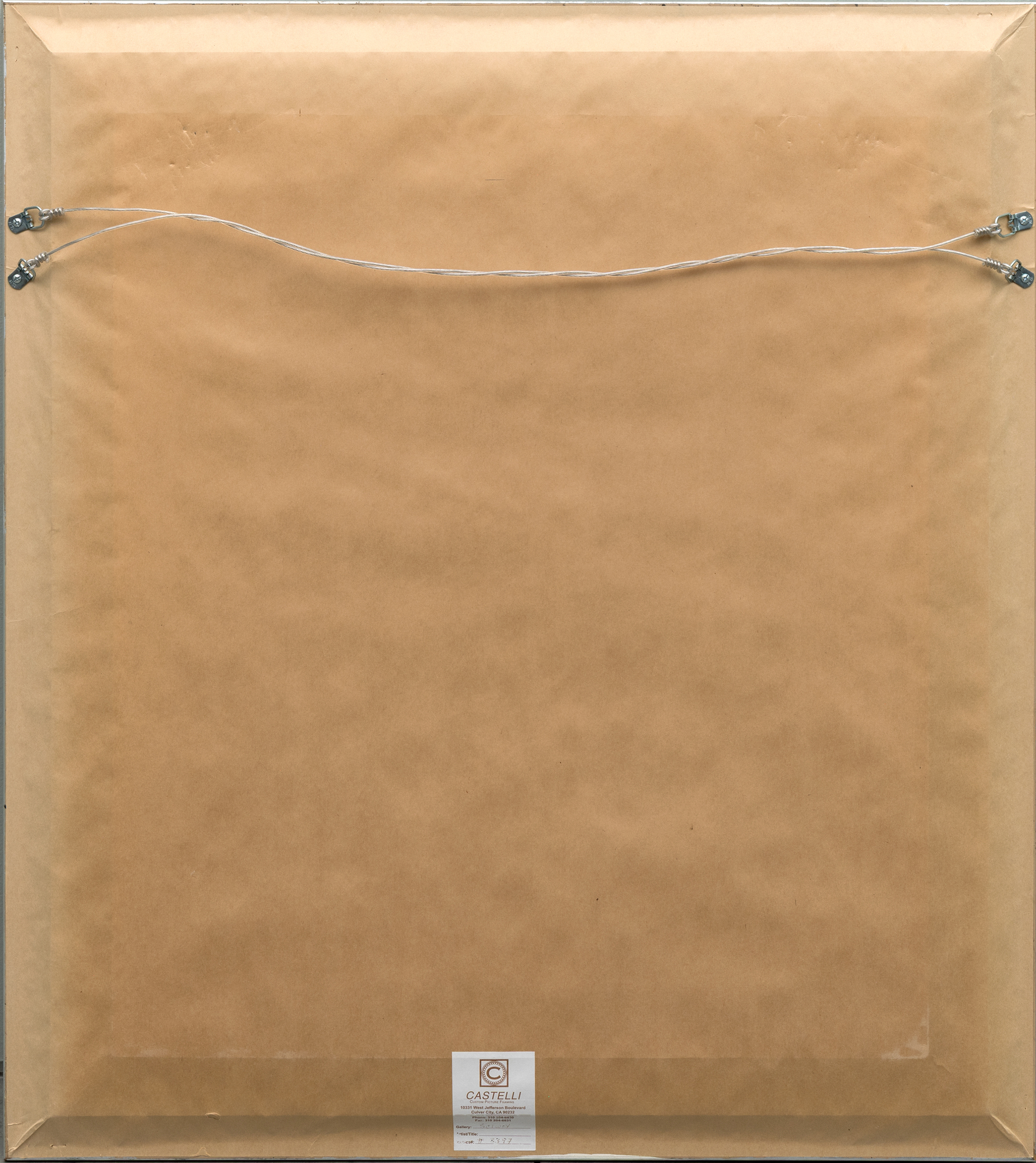
Provenienz
Hamilton SelwayPrivatsammlung
Literaturhinweise
Paul Bianchini, Herausgeber. Roy Lichtenstein: Zeichnungen und Drucke, Lausanne, 1970, Nr. 10, S. 220 (s/w-Abbildung)Mary Lee Corlett, Die Druckgraphik von Roy Lichtenstein: A Catalogue Raisonné, 1948-1993, 2. Aufl., New York und Washington, D.C., 2002, Nr. 38
Andrea Theil und Roy Lichtenstein Foundation, Roy Lichtenstein: A Catalogue Raisonné, New York, lichtensteincatalogue.org, Nr. 1132
195,000
Reverie zeigt eine nachdenkliche, stilisierte Heldin, die in Lichtensteins charakteristischen Ben-Day-Punkten, kühnen Konturen und Primärfarben dargestellt ist und sowohl das Melodrama als auch die Zurückhaltung der Comic-Erzählung einfängt. Der Titel erinnert an den nostalgischen Song Stardust von Hoagie Carmichael aus dem Jahr 1927, insbesondere an die Zeile "The melody haunts my reverie", die die nostalgische Stimmung unterstreicht, die sich im fernen Blick des Dargestellten ausdrückt. Lichtenstein selbst betrachtete seine Beiträge zu 11 Pop Artists als seine ersten echten Kunstdrucke, die den Höhepunkt einer jahrelangen Beherrschung verschiedener Drucktechniken, von der Radierung bis zum Siebdruck, darstellen.
Abzüge aus dieser Edition befinden sich heute in bedeutenden öffentlichen Sammlungen, darunter das Art Institute of Chicago, die National Gallery of Art, das Museum of Modern Art und das Smithsonian American Art Museum, was ihre historische und künstlerische Bedeutung unterstreicht.


